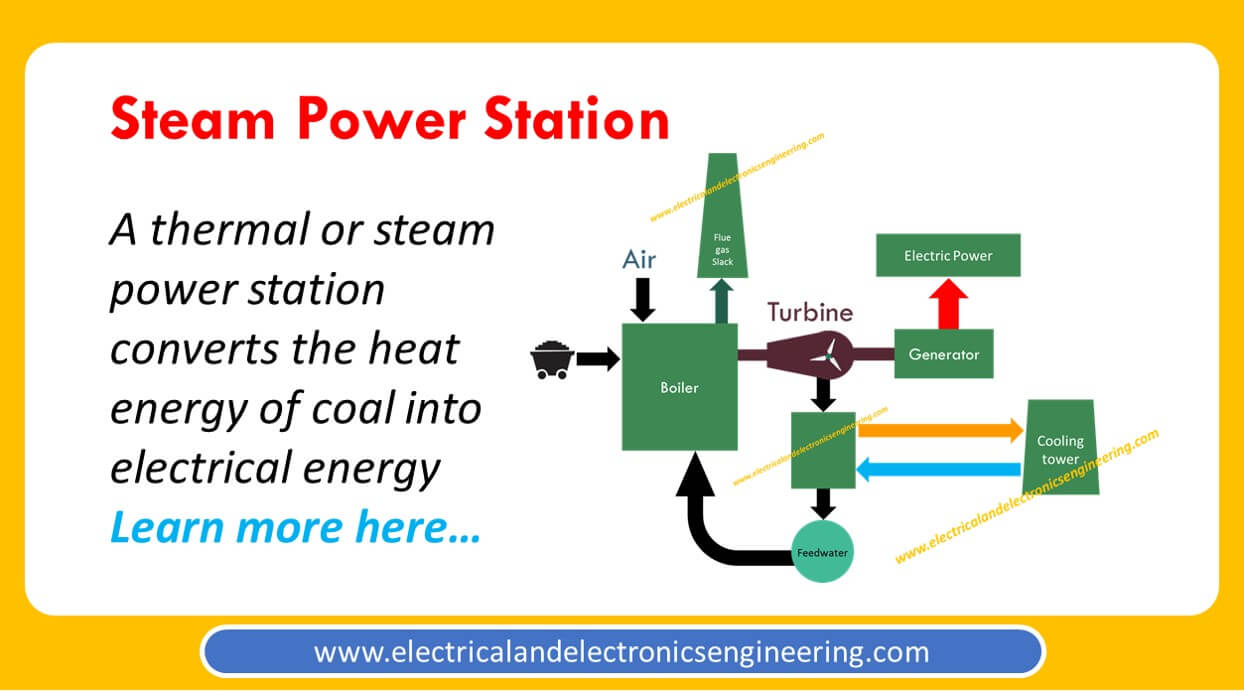A thermal or steam power station converts the heat energy of coal into electrical energy. A thermal power plant is installed in places where coal and water are founded in abundance.
An overview of Working Principle
In a thermal power station, the steam is produced in the boiler by using the heat of coal combustion. This steam is expanded in steam turbine and condensed into a condenser to be fed into boiler again. The steam turbine is synchronized with the alternator and it drives the alternator which produces electricity at its output. In simple terms, the alternator converts mechanical energy to electrical energy.
Schematic Arrangement of Thermal Power Plant

- Coal is fed into a boiler where the high-pressure hot air-fuel mixture ignites the coal.
- The flue gases produced as a result of combustion exit through the flue gas stack.
- The boiler contains water tubes, combustion of coal converts water to steam. This steam passes through the turbine and rotates it.
- The turbine is synchronized with a generator which produces electricity at its output.
- Steam from the turbine is passed into the condenser which condenses the steam back to the water. This water after passing through some other steps is reused in the cycle.
The above cycle (although not exactly match the working of practical model) gives a brief overview of working of steam power station.
